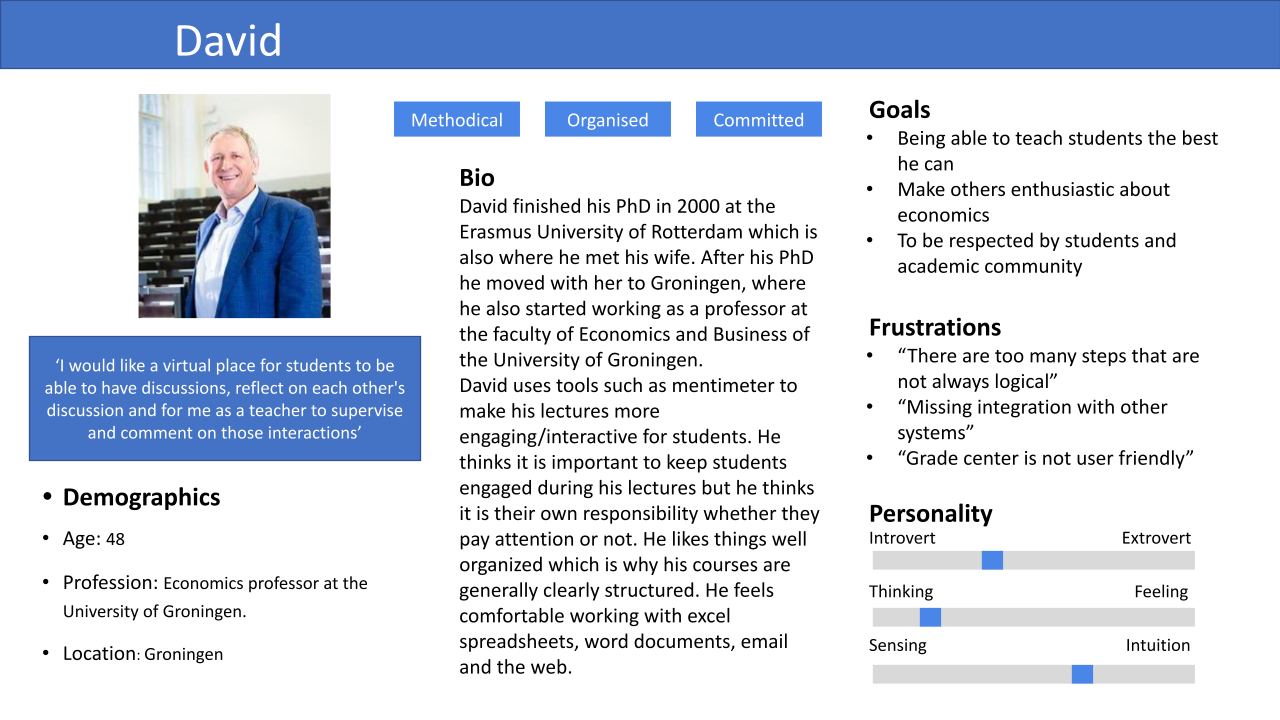User study
In this initial phase of data gathering, the aim was to gain insight into the user problems. The primary end users of the interface were students and teachers, as discussed together with the stakeholder of this project. Secondary users to keep in mind are the system support staff.
Surveys And Questionnaires
Performance disability
To ensure inclusivity, we investigated whether students with a performance disability experience different issues with an LMS than students without a performance disability (like ADHD or dyslexia). In general, the participants did not state that there were problems that are related to their disability.
General student survey
The survey was performed among students from different institutions, to hear about their experiences with all of their different Learning Management System. We got responses from students who have used Blackboard, BrightSpace, Canvas and Itslearning, so we ended up with a clear overview of the different functionalities of the 'Big players' in the LMS world that are and are not valued by their users.
Questionnaire Nestor Support
A questionnaire was sent to a Nestor Support system administrator, to get insights in the most encountered problems. We did not want to lose sight of the potential limitations that a Learning Management System can have. Of course, the main focus of our product is on the end-users, the students and teachers, but we felt as though this extra information might also shed some light on potential boundaries of our design.
Documentation Study
The documentation of the Future of the Learning Environment (similar project to ours) was consulted, plus additional sources that compare the main Learning Management Systems that are currently out there. We compared the results from the FLE documentation to our own survey results, to find overlap and differences between the two sources. Furthermore, we compared our findings with an extentsive list of elements that an LMS can contain, to see which of the features that students and teachers would value can be found in which of the LMS's. It became apparent that the most suitable LMS that is already out there would be Canvas. This was not the end of the road, however. We wanted to see which elements of Canvas could be improved to fully capture the end-users needs.
Observations
The final data was gathered through observation of randomly selected recorded online lectures, to elicit usability issues that students and teachers experience when teaching and working online. We noted down anything that hinted at a struggle with the online teaching environment. This ranged from typed messages in the chat, to annoyance in someones voice, or wrongly performed actions.
Data utilisation
The user research was then synthesized into two personas and scenarios, as well as a hierarchical task analysis to investigate what all functionalities in a learning management system should be and how they are subdivided.

Student Hierarchical Task Analysis

Teacher Hierarchical Task Analysis

Persona David (Teacher)
